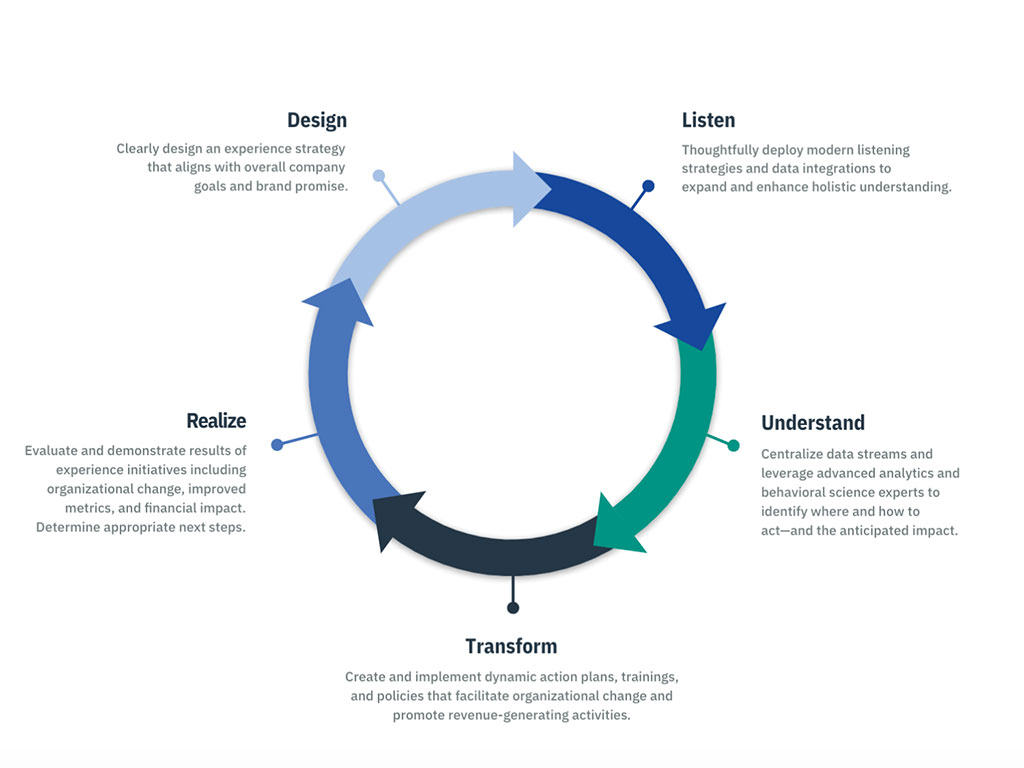
It’s no secret that the Head Of Operations and the Head Of Customer Experience often have differing priorities. This happens because each party, due to their experience, sees the business through a different lens. In fact, COVID-19 has further encouraged most businesses to prioritise a more operational lens, decreasing their focus on the customer experience. As things begin to open up, however, this lack of emphasis on creating positive customer experiences could prove to be problematic as the care a company has put into CX initiatives during this pandemic will surely affect their business post-pandemic.
My name is Justin Rehayem, Head of APAC Solution Designer at InMoment, and I’ve seen this first-hand. To be clear, I do not believe that businesses prioritising operations over customer experience the past few years means that they do not care about the customer experience. However, decreasing CX initiatives in the short term can truly cause some long term effects, especially when it comes to customer churn.
We can’t change the past, but what we can do is learn from it. When future times of crisis present themselves (as they’re sure to do) we as CX professionals can carry forward this lesson: that both operations and customer experience need to be prioritised in order to make it through hard times.
Balancing Operations and Customer Experience: A Case Study
To get a better look at this concept, let’s analyse a policy at an ANZ airline.
First, some context for our international readers. New Zealand’s international border remains closed to the world until at least April 30th 2022, with arrivals having to undergo a 14 day hotel quarantine. In April 2021 however, New Zealand entered into a quarantine free travel agreement with Australia leading to a surge of flight bookings throughout 2021 and into 2022. Unfortunately, due to the rise of the Delta variant, this quarantine free travel agreement was short lived. With quarantine back on the table, as you would expect, airlines had to cancel their international flights and offer credits or refunds to their customers.
But what about domestic flights within New Zealand? You would expect those to be converted into a credit as well since the international visitors cannot enter the country and board the plane. Well, not all airlines agree. Some airlines took a stance that since domestic borders are open, and since the domestic flight can take off, then ‘normal fare rules apply.’
An operations leader might view this situation as the customer’s fault since the international visitor chose not to purchase a flexi fare. Therefore, they should not be entitled to a credit, and must pay the change fee of $50 if they wish to move their flight.
What complicates the policy above is the fact that now there is no certainty when New Zealand’s international borders will open quarantine free, what with the rise of the Omicron variant and nations reverting back to lockdown measures. So what does an international visitor do? Do they change their flight to a future date and pay $50? And risk paying another $50 if the borders are not opened, or just forfeit their airline ticket all together?
Whatever they choose, I can tell you with certainty that when customers have a negative experience, they develop a negative perception of the brand. And this negative perception doesn’t stop with one person, research indicates that an individual’s negative experience with a brand is shared with at least five other people.
A customer-focused policy will view the long term impact this policy can have on a customer’s lifetime value and compare it against the financial impact that a customer centric policy will have on the business. This must be at the root of their reasoning as they advocate for the customer, showing the financial impact of both operations-focused and customer-focused policies side by side. Why? Numbers are the universal cross-functional language spoken by the CEO, CFO, and COO.
What Is the Financial Impact of Customer Churn?
As an example, let’s quantify the possible financial impact to an airline with a less customer-focused policy.
You probably will have gathered by now that I am one of those unlucky customers that have been impacted by the policy having lost $260 on two economy tickets. My partner and I fly at least twice a year to visit family, and you probably can guess by now that I won’t be flying with an airline that doesn’t have customer-focused policies in place. And at $600 a return flight per person, that equates to $2400 in lost revenue per year I choose to fly with a competitor.
Remember how I said that an individual’s negative experience with a brand is shared with at least five other people? Well in my case that number is around 100—since I have around 100 international guests flying overseas for my wedding. With airline tickets so competitively priced, who do you think they will be flying with? So assuming that all my guests follow through on their promise to book a customer-focused airline, then that’s already $60,000 in lost revenue.
So what did this airline gain from deprioritising the customer experience? In my specific circumstances, they may have gained back my forfeited economy flights for $260, but they also forfeited $62,400 in lost revenue over the next 12 months. If the business had offered its international visitors a flight credit for their domestic flight, what would they have lost? The answer is not much, especially compared to the cost of a disgruntled customer.
Wrapping Up: Customer Churn Is Always Costly to Businesses
It’s important for businesses to take into account customer stories like this one when designing policies. A policy focusing that deprioritises customer experience has the potential to cost your business big time when it comes to recurring revenue.
To learn more about customer churn and its impact to your business, check out this article, “Understanding the “Why” Behind Customer Churn”














